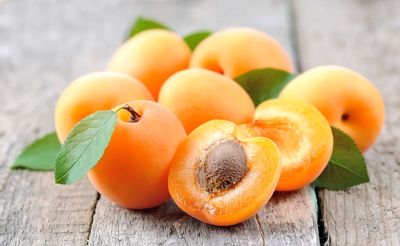Carrots, mangos and apricots beam at us in sunny yellowy-orange colors that promise valuable nutrients. Colorful carotene provides vitamin A and disarms free radicals. Read our tips to find out where it can be found and the best way to extract it.
Carotene isn’t just in carrots
Carotene is actually just the flagship of an entire group. Over 750 natural yellowy-red pigments come under the name carotenoid. Yellowy orange fruits and vegetables such as carrots and apricots predominantly contain α-carotene and β-carotene. The orange variants such as mangos and oranges contain more β-cryptoxanthin. Tomatoes shine red with the help of lycopene.
Even green vegetables are often rich in carotene and lutein. It’s just hidden by green chlorophyll. This is what happens to leaves, which first show their yellowy-red colors once the chlorophyll has broken down in the fall.
Carotenoids make their way into animal products through plant-based feed. This is what makes milk, butter and cheese yellow. And salmon and crab have a light red color thanks to the carotenoids in algae and other foods they eat.
A colorful diet with fruit and vegetables
 Those who dish up various yellow, red or green fruits and vegetables every day have the best chance of getting the whole spectrum of carotenoids on their plate. It not only tastes fresh and aromatic but will also provide your body with valuable nutrients. Carotene is turned into vitamin A in the body and thus contributes to around a third of our daily vitamin A intake. Carotenoids are also beneficial antioxidants. They disarm free radicals and in doing so help to reduce oxidative stress in your body.
Those who dish up various yellow, red or green fruits and vegetables every day have the best chance of getting the whole spectrum of carotenoids on their plate. It not only tastes fresh and aromatic but will also provide your body with valuable nutrients. Carotene is turned into vitamin A in the body and thus contributes to around a third of our daily vitamin A intake. Carotenoids are also beneficial antioxidants. They disarm free radicals and in doing so help to reduce oxidative stress in your body.
Preparing right for maximum carotenoid yield
The number of carotenoids in a certain food depends upon the type, ripeness, the climate, and upon how the food is cultivated and stored. The ideal fruits are ripe, aromatic and brightly colored.
We can also do a lot ourselves to get the optimum yield of carotenoids. It’s the way we prepare our carotene boosters that makes the difference. The important thing here is knowing what you’re doing. In some foods, the carotenoids are stuck within the structure and first need to be “freed”. In others, they’re easier to access. Those who know how different foods should be prepared will be able to get themselves more carotenoids.
With these tricks, you’ll get all the carotenoids you need
- In soft and tender fruits such as mangoes and bell peppers, the carotenoids are distributed in fine droplets of fat and easy for the body to utilize. These foods are best eaten raw or, at most, lightly steamed.
- In firm and solid vegetables such as carrots, the carotenoids are firmly embedded. To free them and make them available for your body, the cell structures have to be broken down. This can be done by e.g. chewing, chopping or boiling. This can increase your carotenoid yield fivefold.
- Lycopene is also stuck very firmly in tomatoes, although they may be to be soft and tender. That’s why we ingest more lycopene when we eat tomato sauce than when we eat fresh tomatoes.
- Be careful when you’re heating these foods up. If foods are cooked at too high a temperature for too long, they lose other nutrients. Carotenoids can be destroyed at temperatures above 100°C.
- Adding some fat also increases the yield of carotenoids because they are fat-soluble. If you add a dash of plant oil, butter or cream (max. 5g of fat) to your vegetable dishes, it will not only round off the taste, but also promote the absorption of carotenoids.
A selection of fruits and vegetables that are rich in these carotenes |
|||
| Carotene (vegetables) | Carotene (fruit) | Lutein | Lycopene |
| Carrots | Apricots | Spinach | Tomatoes |
| Kale | Guavas | Kale | Watermelons |
| Spinach, lamb’s lettuce | Mangoes | Broccoli | |
| Sweet potatoes | Pink grapefruit | Leeks | |
| Bell peppers (red/yellow) | Parsley | ||
